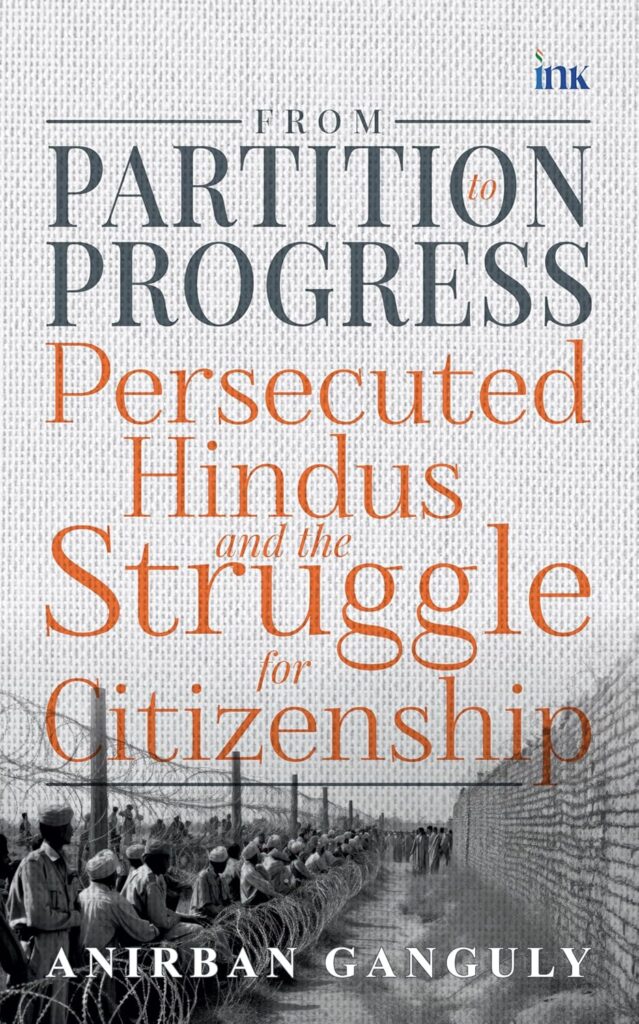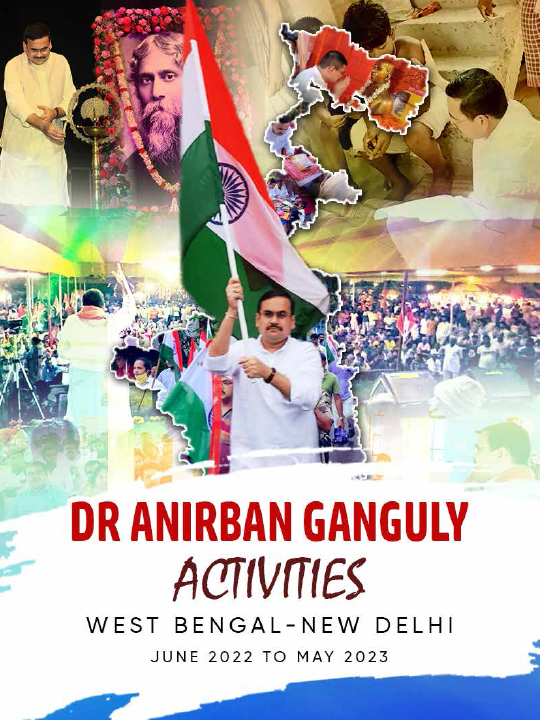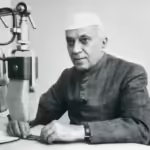Connecting Dreams – Accelerating Progress: Witnessing India’s Connectivity Transformation
- By : Dr Anirban Ganguly
- Category : Articles

April 6, this year will see another historic milestone achieved in the transformative journey of infrastructure in India. The milestone will reiterate India’s aspiration under PM Modi’s leadership of developing world-class infrastructure at par with the best in the world. It will also symbolise the quantum leap in our national scale of thinking. Where once projects were indefinitely delayed, abandoned, left tangled and half-done, where rapid depreciation of infrastructure was common, today that mind-set is being abandoned and forsaken, unleashing our collective capacity to demonstrate Indian skill and resilience.
The 2.5 km long Pamban Bridge will be India’s first vertical lift sea bridge replacing the over 100 years old bridge. Built at a cost of Rs 535 crore, the bridge is in itself an engineering marvel symbolising the energies and aspirations of “Viksit Bharat.” Besides ensuring speedy train travel, the new bridge, once inaugurated, will benefit more than 25 lakh pilgrims visiting the iconic Ramanathaswamy Temple, giving a major fillip to tourism, to the local economy and the connected ecosystem of travel and logistics. Some observers, enmeshed by false and divisive narratives that the ruling party in Tamil Nadu is indulging in, omit to take note of these positive and dynamic milestones.
The Chenab Rail Bridge, the highest single arch rail bridge in the world, demonstrated India’s aspirations and capacities for creating marvels and for leaving imprints on the evolution of global infrastructure. Its centrality is that this bridge connects Kashmir, for the first time, with the rest of India through a rail link. The Chenab Rail Bridge expresses India’s new capabilities, just as the Pamban Bridge does. The Pamban Bridge will stand in a similar league with the Chenab Rail Bridge in historicity and technical marvel. Each of these infrastructural marvels have their uniqueness and stand as examples of PM Modi’s vision and call for developing world class infrastructure. In fact, these demonstrate the imperativeness of such a need for India if the Viksit Bharat narrative has to gain ground and traction.
To anyone who has travelled on national highways over the last few years this infrastructural transformation expressing a transformed scale of thinking becomes evident. About less than a fortnight ago we undertook a road trip in two sectors covering nearly 2500 km. For the lakhs who travelled by road to take the sacred dip at the Sangam in Prayagraj during the Mahakumbh this continuing and ongoing transformation was evident. Most had not imagined that such connectivity would happen in their lifetimes.
In the past decades, till Atal Bihari Vajpayee conceived of the Golden Quadrilateral mega infrastructural national project, there was no effort or vision at focusing on creating a more intense connectivity and network. Post Atal Bihari Vajpayee era, the same mindset set in, digging its heels. Infrastructure and connectivity projects became synonymous with extended deadlines and forgotten promises.
PM Modi’s unique and imaginative PRAGATI (Pro-Active Governance and Timely Implementation) initiative has completely dissolved that developmental knot. It is relevant to recall in this context that towards end of 2024, in a detailed study of the PRAGATI initiative, “From Gridlock to Growth: How Leadership Enables India’s PRAGATI Ecosystem to Power Progress”, the Oxford University based Saïd Business School and the Gates Foundation recorded how PRAGATI enabled 340 infrastructural projects across India to overcome decades of delay and neglect. Many of these projects, the report noted, were delayed for nearly two decades. PRAGATI enhanced federal cooperation, pinpointed accountability and cleared pending projects worth USD 205 billion.
In a foreword to the report Dr Indermit Gill, Chief Economist of the World Bank Group, for instance, observes that “PRAGATI’s success lies in its ability to bring together diverse stakeholders from central and state governments onto a single platform.” Gill argues that “This collaborative approach has been instrumental in addressing some of the most complex challenges in infrastructure development, from land acquisition to inter-ministerial coordination.” The economic impact of PRAGATI is clearly emerging, he says, since “for every rupee spent on infrastructure, India sees a gain of 2.5 to 3.5 rupees in GDP” and “this multiplier effect underscores the critical role that well-executed infrastructure projects play in driving economic growth.” PRAGATI’s impact has also gone far beyond economics, Gill observes, “They have helped foster social progress and environmental sustainability. By fast-tracking projects that provide essential services like roads, railways, water, and electricity, PRAGATI has improved the quality of life for millions of Indians.”
These dimensions have become evident to anyone who has studied the impact of PRAGATI, including those whose lives are positively altering because of an infrastructural transformation, happening for the first time on such a scale. The authors of the report note, among other things, the unprecedented growth of 50,000 kilometres of National Highways in the last one decade. “Led by Prime Minister Narendra Modi,”, the authors observe, “this infrastructure revolution is a critical component of the “Viksit Bharat 2047” initiative (or Developed India 2047), an ambitious roadmap to make India a ‘developed nation’ by its 100th year of independence.” The Economist had to grudgingly admit in May 2024, that “If there is one thing about which both supporters and critics of Narendra Modi can agree, it is that his biggest achievement has been to overhaul India’s infrastructure.”
The study concluded unequivocally that “Pro-Active Governance and Timely Implementation (PRAGATI) has driven accountability at the most senior level, and supported unprecedented federal and regional collaboration, accelerating 340 projects across the country, worth $205 bn, and cutting through decades of delays. It has also enabled Indian Prime Minister Modi, personally, to hold key infrastructure projects to account, challenging decision making and slashing red tape bureaucracy.”
Ever since his first days as Prime Minister, Narendra Modi was clear on the kind of infrastructural transformation he wished for India. “For development”, he insisted, “the first thing needed is infrastructure.” For him, infrastructure “was more than just increasing the length, breadth, and height” it meant “improving convenience and the quality of life for Indian citizens.”
Take the example of National Highways. There has been a 60% increase in National highways in the last decade. The focus has been on laying expressways, high-speed corridors, and Greenfield highways. Road construction, in the last one decade, increased from 11.7 km per day in 2014 to 34 km per day in 2024. While the road construction speed during the UPA regime was a measly 11 km a day. The exercise was almost always plagued with delay due to regulatory clearance logjam, land acquisition issues and resource problems. There has also been a quantum increase in the road sector budget under PM Modi, for instance in 2013-14 the road sector budget was Rs. 34,345 crores while 2023-24 saw 8 times increase with Rs 2.70 lakh crore allotted. The Bharatmala Project has seen an investment of Rs 10 lakh crore for 83,677 km of roads. The decadal rise in the road sector budget during the UPA period was extremely discouraging. In 2004-05 it was Rs 12,000 crore while in 2013-14, that is in ten years, it saw just 2.8 times increase standing at Rs 34,345 crore. The sea change is reflective of the transformed scale of thinking.
It is on this infrastructure in the process of being laid anew and of being overhauled, that we undertook a nearly 2500 kilometres journey a fortnight ago. On a return trip from Thimpu in Bhutan, we reached Jaigaon, the last town or the first town in West Bengal on the border with Bhutan in the district of Alipurduar. From Jaigaon, we decided to cover the entire stretch of north Bengal to Kolkata by road. The nearly 700 km distance woven through National Highways was one of the finest experiences of transformation that India’s highways and infrastructure is undergoing.
Those in West Bengal who falsely complain of discrimination by the Modi government towards the state remain tactically muted on this. Covering a number of important districts and geographical segments, this stretch, which also covers the Berhampore bypass, an engineering marvel in itself, is by far the best stretch. Gone are the days of single road, risky, enervating and fatiguing journeys from Kolkata to Siliguri. The Berhampore bypass was a demand pending for nearly a quarter century and was finally completed on a war-footing by the Modi government. The journey from Kolkata to Berhampore itself has been cut down to 4 and a half hours, from a rickety six hours in the past.
The amazing speed, connectivity stands out while increasing economic activities emerging all along the route are visible. A major portion of this segment, stretching from Nadia to Malda is replete with historic and religious centres, all of which, in the course of the next decade, is bound to see an increasing inflow of pilgrims, tourists and scholars, altering the economic landscape of the region. From the strategic and national security perspective, the laying of this stellar network of national highways, connecting south Bengal to north Bengal and beyond can facilitate movement for emergency deployment as and when the need arises. The Vande Bharat Express from Howrah to New Jalpaiguri in Siliguri, has also immensely added on to the connectivity and speed, increasing the flow of movement for tourism and business. For West Bengal as a whole this stretch of the national highways network is proving to be a dynamic lifeline with the immense potential to generate greater revenue, heightened economic activities and enhancement of lifestyle of people living along the entire stretch.
The next road journey that we undertook, within two days of touching Kolkata, was from Kolkata to Delhi along, what used to be called and is still referred to, as the old Delhi-Road. The same experience welcomes one, from Kolkata to Asansol via Durgapur, both major entrepots in West Bengal. On stretches of the road between Kolkata and Durgapur the work to widen and to relay the national highway is going on at a war footing, while the time taken to reach Asansol and the physical exertion has considerably reduced.
That the formulation of a new infrastructure for a new India is not a mere slogan or political claptrap becomes evident to anyone who crosses these stretches and other expressways. From Asansol onwards via Jharkhand, covering Dhanbad, Gaya, Sasaram and on to Varanasi and from Varanasi to Lucknow and from Lucknow to Delhi, covering an over 1600 km stretch, the experience is much the same, seamless, transformative, enhanced and at par with many such highways across the world. Except for stretches in the district of Gaya, the experience is sustained and similar. The slowdown in the Gaya stretch is solely because of the ongoing work which is progressing at a rapid pace.
Economic, cultural and culinary activities will see a huge increase along these routes in the coming decades. The vision of one nation, one infrastructure, one type of connectivity will soon become a reality. We could visualise an intricate, rich, many-faceted and colourful web and network of pilgrim centres, cultural and art spots, of culinary uniqueness emerging. These will eventually find more scope to emerge and to connect themselves with the national consciousness grids that these highways are gradually weaving together. Options of movement will increase and so will the comfort of the experience. The vision, concept and spirit of federalism and of federal cooperation will also assume an altogether new dimension as these corridors and highways grow and are laid. The generations to which our parents and grandparents belonged could only hope that perhaps someday India would see such roads, but there was a certain resignation in their hopes, they could never believe that such a transformation was possible. That mindset is altering and the sense of resignation is giving way to new and manifested realities.
The consciousness of one nation and one people with its manifold expressions is a sense that can only be cemented through such a transformation – long awaited – in India’s infrastructure sector. It is laying a solid foundation for the edifice of a developed – Viksit India. When PM Modi says, “Better infrastructure is about connecting dreams and accelerating progress”, it is not a mere profession or expression of intent, he is well on his way towards realising that vision. That realisation is altering landscapes and India’s mindscape as well.












